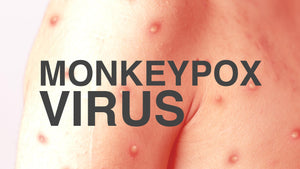
Sterilization - Best Practices for Nursing Homes
Sterilization is not only important but a necessity in hospitals as well as nursing homes for the best possible care of patients. Disinfection and sterilization are essential for the patient’s care as, without the due protocols and processes, the patient will not be able to recover and keep on battling the never-ending ordeal of hospital-acquired infections (HAIs). Sterilization or disinfection not only ensures proper cleaning of wounds and clothing around the patients but also ensures the proper cleaning and sterilization of apparatus and instruments being used by the patients and hospital personnel to eliminate any chance of the patient acquiring an infection among which surgical site infections (SSIs) are the most common. World Health Organization and several national healthcare associations have their own sterilization guidelines, standards, and best practices that must be followed by all nursing homes and hospitals. Here, we bring some of the most commonly accepted and implemented sterilization practices in nursing homes and hospitals- Accepted Practices:
- All care items belonging to the patient must be processed before reuse. Preferably, only use and throw or disposable items should be used to avoid any risk of infection
- All medical/ surgical items being sterilized should be decontaminated, properly cleaned, and then inspected to ensure that the items can be stored safely in a controlled environment.
- Sterilized medical items should be packaged properly, preferably in a manner that promotes sterilization and emphasizes the cleanliness of medical equipment as well as the environment.
- Immediate use of sterilization through steam should be kept at a minimum and should only be utilized in a few selected medical situations/tools.
- Not all items should be sterilized with steam and water. Use the hydrogen peroxide method where the medical equipment or items are heat or moisture resistant. As it costs more, this should only be done when necessary, not for all equipment or items. Ozone sterilization can also be used for heat-sensitive materials, but only when and as indicated by the manufacturer of the medical equipment.
- For any medical equipment or items that are impenetrable to heat (moist heat), you should definitely consider going for the dry heat sterilization. It can also be used for sterilizing the anhydrous materials that have the capability of withstanding high temperatures.
- For any equipment or tools that utilize peracetic acid or related compounds for sterilant, liquid chemical processing should be used.
- The transportation of the sterile equipment should also be taken care of as even the process of transportation can risk the equipment or tools getting infected.
- For clothing and other material like beddings, proper guidelines as per the accepted medical practices and manufacturer of the cloth should be considered. Proper washing with boiling water and disinfectant spray is commonly implemented to achieve the complete sterilization of cloth materials.







